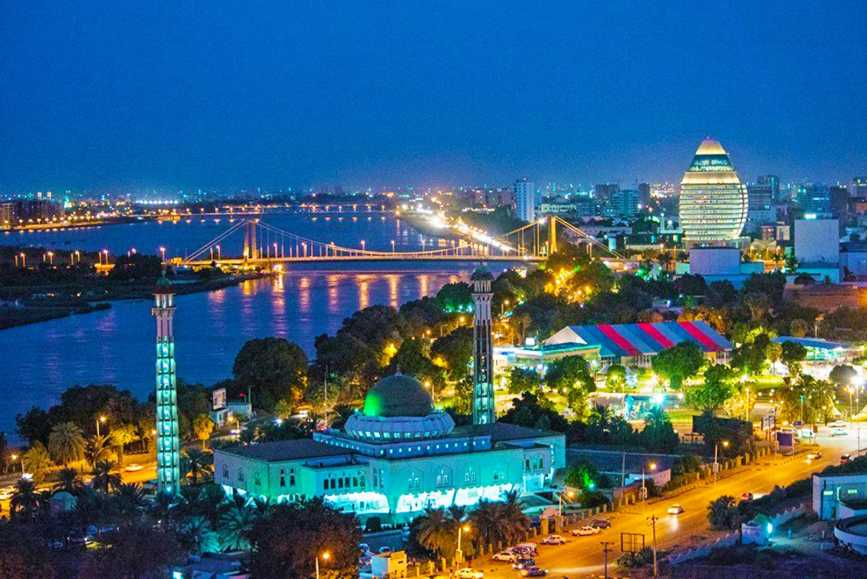Travel & Tourism
Due to ongoing conflict, tourists are advised not to travel to certain parts of the country. Check your locally embassy for updates.
What to Do in Sudan
1. Red Sea: The Red Sea’s shoreline is a major attraction in Sudan. It is particularly appealing to those interested in diving. The marvelous sea and its surrounding area have been one of Sudan’s top tourist attractions.
2. Ethnographic Museum: This museum in Khartoum gives visitors a chance to go back in time and get a glimpse of Sudanese village life. Its displays show how Sudanese culture has developed, through songs, traditions, religion, and other aspects of day-to-day life.
3. National Museum: This museum is also located in Khartoum and offers a comprehensive overview of Sudanese history. Two reconstructed temples, saved from older sites that had been flooded, are highlights.
4. Camel Market: Visit the camel market in the old capital of Omdurman. Animals from both eastern Sudan and western Sudan are to be seen here.
5. Tomb of Mahdi: After this tomb and mosque was destroyed, in 1898, a son of the Mahdi (the empire that ruled Sudan before English colonization) rebuilt both the tomb and the mosque in 1947.
6.Sudan’s Souks: Visit the various souks in Omdurman. You’ll find original handcrafted Sudanese pieces at great prices. It is also a fine place for people watching and interacting with locals.
7. Pyramids of Meroë: The construction of royal tombs at Meroë began in 270BC and the remains of more than 100 pyramids are clearly visible, some of which date back as far as the 8th century BC. Unlike burial sites in Egypt, at Meroë you may well have an entire cemetery to yourself to explore:
8. Western Deffufa: This vast, mud-brick structure in Kerma is 3,500 years old, 50m long and still rises 18m above the surrounding land. It is possibly the oldest manmade structure in sub-Saharan Africa and, although its exact purpose is unknown, it is likely it held some ceremonial importance at the centre of an ancient city.
9. Faras frescoes: Rescued from the rising waters of Lake Aswan and now protected inside the National Museum in Khartoum, these paintings are the finest artistic output of Christian Nubia. Burial in the sand protected the paintings and the cathedral in which they were located, so that when they were excavated in the 1960s the colours were still incredibly vivid.
10. Scuba diving at Conshelf II: The pioneer of scuba diving, Jacques Cousteau undertook his famous underwater living experiment (featured in his film World Without Sun) on this Red Sea reef just off the Sudanese coast. Though Cousteau’s living quarters were removed once the experiment was over, the airtight dome of the submarine garage remains and is a place of pilgrimage for serious divers.
11. Whirling dervishes: On Friday afternoons, adherents of the Sufi Qadiriyah order gather at the Hamed al-Nil Tomb in Omdurman to dance and pray. Their long robes are a riot of red and green, and with the help of cymbals and drums they build themselves up into a spiritual ecstasy, chanting and spinning as they commune with God. Visitors are welcome to watch.
When to Go
Eid Al-Fitr occurs right after Ramadan; that is probably the best time to go to Sudan to enjoy music and cultural events.
The weather in Sudan is typically very hot. The rainy season lasts from May until October. Sandstorms can occur during the dry period, from April until September, so plan accordingly.
Getting In and Around
Visas: A valid passport and a visa are necessary when you’re arriving in Sudan. Tourists usually opt for a one-month visa.
Transportation: Numerous international airlines fly to Sudan; most airlines fly into Khartoum International Airport.
In Sudan, traveling by car is the best option. Driving at the appropriate hours in areas deemed safe is a secure way of getting about. If you’re bold enough to venture into areas that the government labels as dangerous or unfit for travel, you’ll need a travel permit to move around.
Mobile Phones: Sudan has relatively good coverage. Make sure to have or buy a GSM phone with a SIM card.
Safety and Security
Concerned about your safety as you plan travel to Sudan? We at Africa.com, together with our friends, family and colleagues, travel extensively throughout the continent. Here are the resources we consult when thinking of our safety in Sudan:
• UK Government Sudan Travel Advice Guidance
Africa.com comment: Very timely and frequently updated. Perspective assumes that you ARE going to travel to Sudan, and seeks to give you good guidance so that you understand the risks and are well informed.
• U.S. State Department Travel Advisory on Sudan
Africa.com comment: Can sometimes be considered as overly conservative and discourage travel altogether to destinations that many reasonable people find acceptably secure. On the other hand, they have the resources of the CIA to inform them, so they know things that the rest of us don’t know. See what they have to say about Sudan.
Local Advice
1. We recommend sticking to Khartoum and Omdurman during your visit. They are the safest and consequently the biggest tourist destinations in the country.
2. Pay attention to specific rules in any city that you stay in. Curfews are implemented in most large cities, usually from about midnight until four in the morning.
3. Sudan is an Islamic country. Be mindful and respect the culture in order to forestall any negative attention.
4. No American credit cards can be used in Sudan, because of embargoes. Make sure you change your money before traveling or at the airport at an authorized vendor, and also be mindful when you’re carrying cash on your person.
5. The official languages are Arabic and English. Learn some basic words in Arabic; even greetings will suffice.
